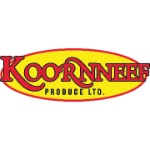Challenge Overview
Here is a quick overview of the challenges you may face in the AgriTech Hackathon!
Navigation Quicklinks
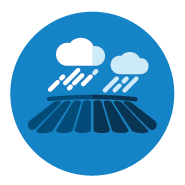 Soil Erosion & Depletion
Soil Erosion & Depletion
Sponsored By:
How can farmers use technology to monitor and report the health of their soils to avoid and reduce risk of soil erosion on their land?
Context/Background
The Niagara Region in Ontario, Canada is home to over 1800 farms and agriculture related operations. The Region is one of the greatest places to grow due to the Niagara Escarpment’s unique impact on the soil and the modifying offshore breezes of Lake Ontario and Lake Erie. Without such unique soils, Niagara would not be able to harvest such an array of grapes, tender fruit, vegetables, flowers and more. In recent years, in correlation with climate change, the Region is seeing an increase in droughts and dry spells, changes in participation patterns, warmer average temperatures and increases in storms and extreme weather events. The effects of these changing weather patterns have potential to pose negative implications on the Regions overall soil health. This is not just a concern within the Niagara Region. All other countries across the globe are being faced with the negative externalities to climate change on their soils, impacting food security across the globe. How can technology provide solutions in this area, so farmers can act on poor soil health and potentially avoid complete crop failure?
Not Sure How to Get Started?
What information would help farmers determine if their soil is susceptible to future risk of soil erosion?
What are the current methods used by farmers to monitor the health of their soils? How could technology improve this?
What are the contributing factors that lead to poor soils? How do these factors
further contribute to soil erosion?
Resource Links
http://www.omafra.gov.on.ca/english/engineer/facts/12-053.htm
https://www.agr.gc.ca/eng/agriculture-and-climate/agricultural-practices/soil-and-land/soil-erosion-indicator/?id=1462893337151
http://redgreenandblue.org/2020/07/30/green-technology-prevent-soil-erosion/
 Diseases & Pests
Diseases & Pests
Sponsored By:
How can technology reduce the economic impact of plant diseases and pests by improving farmers’ ability to quickly and accurately diagnose and respond to plants/trees/vines with disease or pest issues?
Context/Background
Farmers growing crops (fruits, grapes, grain, etc) everywhere around the world must deal with pests and diseases. Pests and disease can cause everything from slight crop damage to total crop failure. Farmers use a variety of methods to prevent or remove pests from fields and plants, including but not limited to: chemical-based methods (pesticides, herbicides and fungicides), biological methods (e.g. beneficial/predatory insects), physical methods (e.g. nets/barriers, crop rotation, refuge crops), and other control methods (e.g. propane-fired cannons or “bird-bangers”, coloured balloons, streamers). Some pest control methods are losing their effectiveness from their inability to deteriorate the pests or diseases accurately and effectively within the fields and plants in a timely manner. It is expensive and time consuming to efficiently inspect, monitor, prevent and respond to overarching concerns from pests and diseases. Not only that, but diseases and pests can pose a significant negative impact on local food security and international trade, which many farmers rely upon. How can technology help farmers not only respond effectively to outbreaks with diseases and pests, but also do it in an environmentally and cost friendly manner to avoid crop damage or total crop failure, resulting in economic loss.
Not Sure How to Get Started?
What are the economic implications faced by farmers when their crops are diagnosed with disease and pest issues?
How could innovations from other industries be used to help monitor and reduce pest damage to agricultural crops?
What is currently being done to locate disease and pests within the agriculture industry and how can technology be used to fast track the diagnosis?
Resource Links
https://www.agr.gc.ca/eng/agriculture-and-climate/agricultural-practices/agroforestry/diseases-and-pests/?id=1344636727377
https://agr.gc.ca/eng/agriculture-and-climate/agricultural-practices/agricultural-pest-management/agricultural-pest-management-resources/?id=1176728972381
https://www.agriculture.gov.au/pests-diseases-weeds
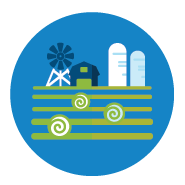 Infrastructure
Infrastructure
Sponsored By:
How can technology improve local labour infrastructure by increasing the attractiveness and skill level of agricultural and greenhouse jobs, and by encouraging youth to seek employment in agriculture?
Context/Background
Over 11% of Ontario’s labour force works in the agri-food sector. Within that sector, the Niagara Region employs over 5500 residents and is home to over 215,000 acres of farmland. Over a quarter of that farmland belongs to Niagara’s 200+ greenhouses. In recent years, greenhouse businesses and tender fruit & grape farms in the Niagara Region have struggled to find qualified workers to support their needs for labour. This is not just a concern in the Niagara Region. For all farms to hold a competitive advantage, jobs must be able to adapt to technological advancement to support competitive and well-paying employment. Local universities and colleges such as Brock and Niagara College have increased their offerings of agriculture and food-related programs in the hope of bringing a new generation of young, skilled workers into the agri-food sector. At the same time, many farms are adopting new technologies to advance labour efficiency, and these technologies create new opportunities for careers within the agriculture sector. How can technology further that advancement by not only creating more jobs within the agri-food sector but creating well paying, attractive jobs for youth with interests in technology and technological processes?
Not Sure How to Get Started?
What are the current variations in jobs found within today’s agricultural sector?
How is technology currently being used in labour throughout the agriculture sector?
Are agriculture related jobs currently being taught throughout educational institutions? How can the increase in technology shift labour focus to the agriculture sector?
Resource Links
https://www.cgap.org/blog/youth-agriculture-new-generation-leverages-technology
https://www.businesseventscanada.ca/economic-sectors/agribusiness
https://www.cfa-fca.ca/getting-into-the-field-labour-issues-in-agriculture/
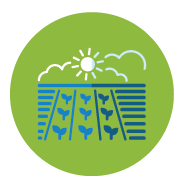 Ecotourism & Sustainability
Ecotourism & Sustainability
Sponsored By:
How can technology be used to benefit local agri-food businesses for sustainable practices and products, and encourage consumers and tourists to access those sustainable options?
Context/Background
The Niagara Region in Ontario, Canada is a large agricultural tourism destination. Over 100 local wineries, numerous restaurants, breweries, distilleries and farmers markets highlight the best of our local agricultural to the world. Last year, Niagara’s agri-business totaled an annual CAD$1.41 billion GDP. However, with “mass tourism” bringing attention to sustainable ecotourism practices, the Region is concerned consumers and tourists could have an overall negative impact on the natural environment of the area. This concern stems far beyond the Niagara Region and impacts many ecotourism destinations globally. Finding the equilibrium between supporting ecotourism-related activities and being a sustainable tourism destination is difficult for many destination marketing organizations. How can today’s technology help agri-food businesses encourage sustainable practices and products while also encouraging tourists to connect with sustainable experiences to preserve the natural environment and support economic growth?
Not Sure How to Get Started?
How can tourists visiting an agri-tourism destination learn about the sustainable food opportunities within that area?
What can local businesses do to become more sustainable, especially in relation to visitors and tourists?
How can local farms get involved in sustainable tourism to help raise awareness of their sustainable products?
What barriers might be preventing or limiting consumers and tourists from accessing sustainable options?
Resource Links
https://ecotourism.org/
https://www.earth-changers.com/blog/2017/1/17/sustainable-tourism-ecotourism-responsible-travel-conscious-tourism-whats-the-difference
https://www.businesseventscanada.ca/economic-sectors/agribusiness
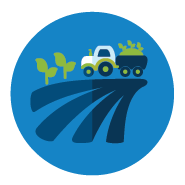 Production & Environment
Production & Environment
Sponsored By:
How can emerging technologies like computer vision and Artificial Intelligence be leveraged to help not only solve current challenges in agriculture but also help reduce escalating costs?
Context/Background
The Niagara Region in Ontario, Canada produces 94% of Ontario’s grapes and 90% of Ontario’s tender fruit. Many of these products need to be delivered provincially, nationally and even globally which can often be a difficult, expensive and time-consuming process. Rising costs from agricultural inputs and labour combined with lower on-farm prices is causing many farmers significant economic loss. COVID-19 has showed the world the importance of local agriculture and local food processing for global food security. However, production costs for farmers continue to escalate. This is beginning to push out small locally owned farms, and only large companies that have economies of scale are managing to survive. How can the emergence of computer vision and artificial intelligence enable farmers and agri-businesses to acquire, process and analyze digital images and data to make more effective decisions for their farm and/or business operations?
Not Sure How to Get Started?
What steps/tasks are needed to get a crop from production to market? Which step is a crop most vulnerable to develop a foodborne illness?
Is Computer Vision and Artificial Intelligence currently being used throughout the agriculture sector? If yes, how?
Why are small farms deteriorating and why are large farms surviving with elevating costs?
Resource Links
http://www.omafra.gov.on.ca/english/busdev/production.html
https://www.investopedia.com/terms/a/artificial-intelligence-ai.asp
https://www.startus-insights.com/innovators-guide/5-top-computer-vision-startups-impacting-agriculture/#:~:text=Computer%20vision%20is%20one%20such,informed%20decisions%20about%20the%20farm
Navigation Quicklinks
 Soil Erosion & Depletion
Soil Erosion & Depletion
How can technology help consumers learn about the soil and water management and production practices used to produce the flowers and plants they purchase?
CONTEXT / BACKGROUND
Niagara is home to over 500 acres of greenhouses; much of that in floriculture (flower) & nursery production valued at over $300 million per year. At a provincial level, Ontario exports $275 million and imports another $260 million of flowers and nursery products every year. Flowers are beautiful, but most consumers don’t know what happens inside a greenhouse, or whether the plants they buy were grown sustainably. In recent years, water quality from greenhouses has become an increasing concern. The incoming water quality needs to be good, with no contaminants that could harm the plants. At the same time, excess/unused fertilizer can build up in the water. Some greenhouses have come under scrutiny for fertilizer-containing water being discharged into the natural environment. Many greenhouses have started recycling their water and using additional water treatment to remove leftover fertilizer. Educating consumers about growing practices and highlighting sustainably-grown products may help encourage greenhouse growers to continue innovating and adopting better practices. How can technology provide some solutions here?
NOT SURE HOW TO GET STARTED?
- What information would help consumers understand whether the flowers and plants
they are purchasing were grown sustainably? - How could greenhouse growers make their workers more aware of water quality and
sustainability issues, and encourage them to be part of the solution? - What are the most important things a consumer looks for when buying flowers or
ornamental plants? What are the most important things a farmer must think about when
growing the plants? - What ways do consumers like to receive information about the products they are
purchasing?
Diseases & Pests 
How can technology help farmers control pests within their crops while also ensuring the surrounding communities and natural environment are protected from any negative impacts?
CONTEXT / BACKGROUND
Any farmer growing any crop (fruit, grapes, grain, etc) has to deal with pests – whether weeds, insects, birds, wildlife or diseases. Pests and disease can cause everything from slight crop damage to total crop failure. Many farmers use chemical-based methods (pesticides, herbicides and fungicides) to prevent or remove pests from fields and plants. For larger pests such as birds and wildlife, other deterrents are used such as propane-fired cannons (“bird bangers”) or coloured balloons. Some pest control methods are losing effectiveness from overuse and/or resistance developing in the pests (e.g. herbicide-resistant weeds). At the same time, concerns are being raised about the larger environmental impact of certain pest control methods. Farmers are caught in the middle between needing to protect their crops from damage and disease, and needing to ensure whatever pest control methods they use do not impact the surrounding environment.
NOT SURE HOW TO GET STARTED?
- How could the amount of crop damaged by or lost to pests be measured and
monitored? How could a farmer use this information to improve their pest control
practices? - What information would help the public better understand whether certain pest control
products and/or practices are being used responsibly on a farm? - How could innovations from other industries be used to help monitor and reduce pest
damage to agricultural crops? - How could technology help farmers keep pest control products out of the natural
environment, while still targeting the specific pests in the crop?
 Infrastructure
Infrastructure
How can we use technology to improve irrigation efficiency and enable farmers to make better decisions on irrigation timing?
CONTEXT / BACKGROUND
Water is critical to growing crops and livestock to feed Canadians. Some crops rely on rainfall for growing. However, weather patterns can be uncertain. Just the last few yeas in Ontario have contained periods of both extreme rainfall and drought conditions. Irrigation allow farmers to produce more food with higher quality and better consistency, regardless of weather impacts. Greenhouses need to get all their water from irrigation. Niagara has access to large freshwater resources in the Lakes Ontario and Erie, as well as groundwater resources. Irrigation equipment is expensive to set up and operate, and farmers need to obtain permits for irrigation water use. Irrigating uses A LOT of water – irrigating 1 hectare (2.47 acres) of land with 25 mm (1 inch) of rain takes 253,000 litres of water (67,000 gallons). Accessing enough water, using water efficiently and making decisions when to irrigate are critical pieces of the puzzle.
NOT SURE HOW TO GET STARTED?
- How could farmers measure whether their crops need irrigation?
- How could the amount of irrigation water getting to the plants be increased without
increasing the total amount of water being irrigated? - How could technology help minimize the environmental impacts of irrigation (e.g.
groundwater depletion)? - How could consumers know whether the produce they purchase was grown using
efficient and sustainable irrigation practices?
Ecotourism & Sustainability 
How can technology facilitate local tourism, encourage sustainable experiences, and protect the integrity of the rural/agrarian and natural landscape?
CONTEXT / BACKGROUND
The Niagara Region is an agricultural tourism destination. Over 100 local wineries, numerous restaurants, breweries, distilleries and farmers markets highlight the best of our local agriculture to the world. There are also many other hidden gems in the area including local artists studios, antique stores, farm stays/experiences, cycling & hiking, cultural and natural heritage experiences. However, “mass tourism” pushes visitors to be consumers, and can be damaging to the local environment. Ecotourism focuses more on the natural environment and provides a more sustainable source of livelihood to the local community, bringing ecological experiences to travellers while conserving the natural environment and encouraging economic benefit. Today’s technology may provide some help in encouraging more sustainable tourism and providing new ways for visitors to connect with local people and experiences.
NOT SURE HOW TO GET STARTED?
- How could visitors to Niagara learn about and share in the best local experiences in
sustainable ways? How can visitors tell whether a local experience is sustainable? - What could local businesses do to improve their sustainability, especially in relation to
visitors and tourists? - Which parts of the natural environment are most at risk of damage by tourism? What ways could technology help to protect those parts and reduce that risk?
- How could local farms and businesses get started with sustainable tourism and attract
responsible visitors?
 Production & Environment
Production & Environment
How can we leverage technology to improve labour efficiency and potentially incorporate automation into agricultural work?
CONTEXT / BACKGROUND
Farm work is hard, labour-intensive and demanding, especially on grape and tender fruit farms where many tasks are done by hand, including fruit picking, trimming/pruning, sorting and packaging. It is often difficult for farms to find enough labour, or to ensure the labour they have is trained well and able to work efficiently. Many farms rely on seasonal foreign workers who may not be well trained and for whom English may be a second language. At the same time, many farm tasks are monotonous and repetitive. Better training, improved labour efficiency and/or automation solutions may help address labour shortages in agriculture and provide new options for farmers to manage their farms.
NOT SURE HOW TO GET STARTED?
- What steps/tasks are needed to get a crop from growth to harvest to market? Which
tasks take the most labour? Which tasks might benefit the most from automation? - How could farmers measure labour inefficiencies and identify opportunities to do
things differently? - How could farm workers learn new, more efficient ways of doing things and/or adopt
new technologies that could improve efficiency? How do people in this modern age
learn to do things they haven’t done before? - What barriers might be preventing farm workers from working more efficiently? How
could technology help eliminate those barriers?

